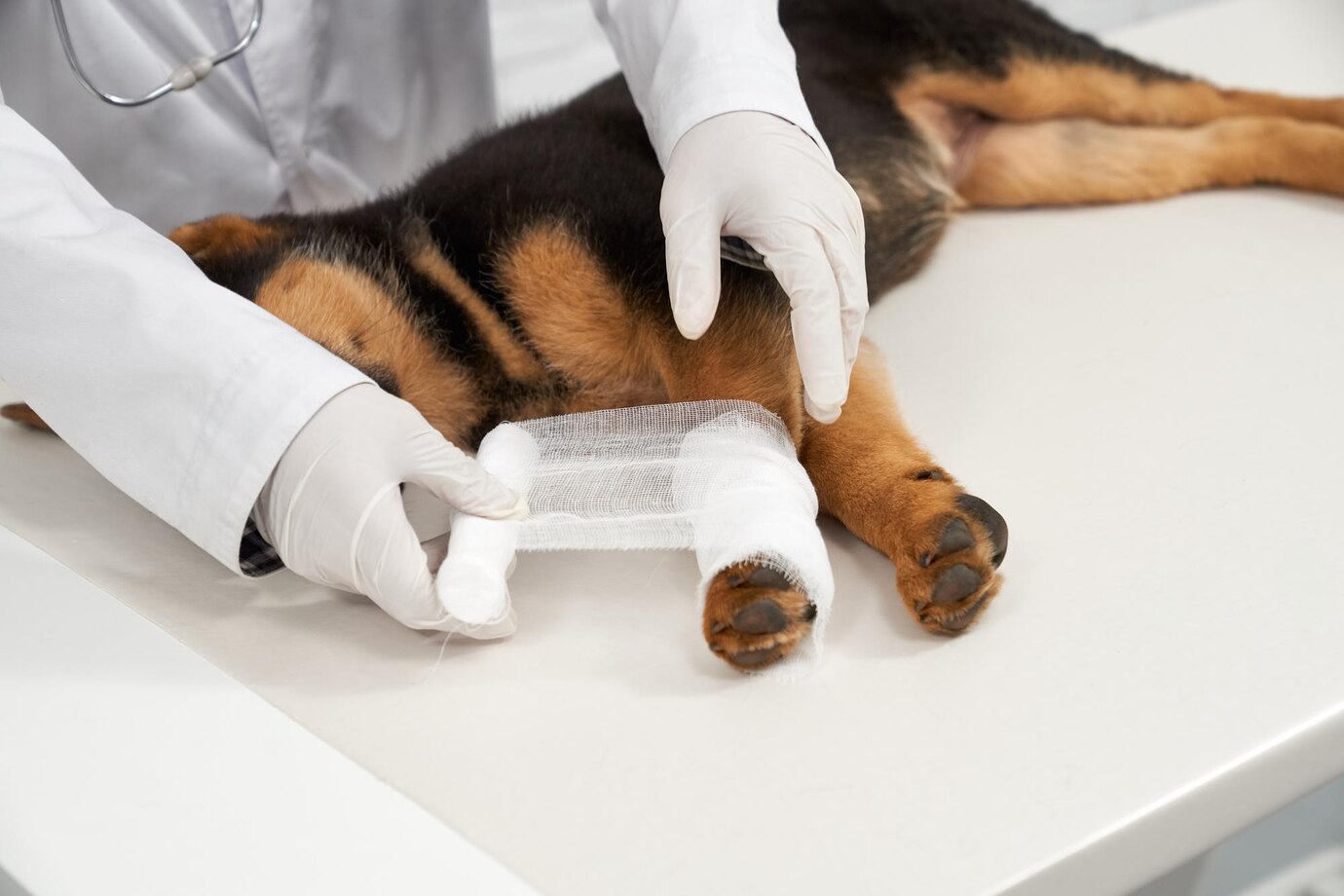
Pet Insurance for Dogs: What You Need to Know
Imagine this: your dog suddenly starts limping after a lively game of fetch. You rush to the vet, only to be told he needs an X-ray, possibly surgery, and weeks of physiotherapy. The bill? Easily in the thousands. That’s when pet insurance transforms from a “nice-to-have” into an absolute lifeline.
If you’re a dog owner, chances are you’ve considered insuring your furry friend. But with dozens of options, confusing terms, and fine print galore, it can feel like trying to translate a foreign language.
This dog insurance guide is here to make it all a lot clearer.
Whether you’re bringing home a new pup, insuring an older companion, or just doing a bit of comparison shopping, this guide breaks down everything you need to know — from types of cover and what’s included, to how to find the best pet insurance for dogs based on your breed, budget, and lifestyle.
Let’s get started — because your dog deserves protection that’s as loyal as they are.
Why Dog Insurance Matters
Vet bills can escalate quickly and unpredictably.
According to the Association of British Insurers (ABI), the average pet insurance claim in the UK is over £800, and some emergency treatments can cost several thousand pounds.
Pet insurance offers:
- Financial protection when the unexpected happens
- Peace of mind, so you’re not forced to choose between care and cost
- Access to better treatment options, including specialists and diagnostics
- Lifetime cover for chronic conditions, depending on the policy
And most importantly, it lets you focus on your dog’s recovery, not your wallet.
Types of Dog Insurance Explained
Before diving into features and prices, it helps to understand the different types of dog health insurance available.
1. Accident-Only Cover
The most basic (and cheapest) type of insurance.
Covers: Accidents only — like broken bones or injuries from a road traffic incident. Does not cover: Illness, chronic conditions, or routine care.
Best for: Young, healthy dogs or tight budgets.
2. Time-Limited Cover
Covers accidents and illnesses, but for a limited time (usually 12 months per condition).
Pros:
- Affordable monthly premiums
- Covers a wide range of conditions, short-term
Cons:
- Won’t help with chronic or recurring illnesses beyond the time cap
3. Maximum Benefit Cover
Gives a fixed sum per condition (e.g. £2,000), but with no time limit.
Example: Your dog is diagnosed with arthritis — the policy pays up to the benefit limit, no matter how long it takes.
Note: Once the limit’s reached, cover for that condition stops.
4. Lifetime Cover

The most comprehensive — and often the best pet insurance for dogs if you want long-term peace of mind.
Covers:
- Illnesses
- Injuries
- Chronic conditions
- Renewed annually with continuous cover
Perfect for:
- Breeds prone to hereditary conditions (like Bulldogs or Labs)
- Older dogs
- Owners who want full financial reassurance
What Does Dog Insurance Typically Cover?
While every policy is different, most will include:
- Vet fees (up to the annual or per-condition limit)
- Diagnostic tests (blood tests, scans, X-rays)
- Surgery and hospitalisation
- Prescription medications
- Chronic condition management (with lifetime cover)
- Dental cover (injury-based, and sometimes illness-based)
- Third-party liability (especially for dog owners — crucial if your dog causes damage or injury)
Some providers also offer extras like:
- Travel cover (if you take your dog abroad)
- Alternative therapies (hydrotherapy, acupuncture)
- Lost pet advertising and reward
- Kennel fees (if you’re hospitalised)
What’s Not Covered?
Understanding exclusions is just as important.
Most policies won’t cover:
- Pre-existing conditions (unless symptom-free for a defined period)
- Routine care (vaccines, flea/worm treatments, neutering)
- Pregnancy and breeding
- Cosmetic or elective procedures
- Behavioural treatments, unless specifically included
Pro tip: Always read the fine print. If in doubt, ask the insurer before you sign up.
How Much Does Dog Insurance Cost?
It depends on:
- Breed (some are more prone to issues)
- Age (older dogs = higher risk = higher premiums)
- Location (vet costs vary across the UK)
- Cover level (lifetime cover costs more than accident-only)
- Excess amount (higher excess usually means lower monthly cost)
Average Monthly Costs (Estimate):
| Type of Cover | Small Dog | Medium Dog | Large Dog |
| Accident-Only | £6–£10 | £8–£12 | £10–£15 |
| Time-Limited | £12–£18 | £15–£20 | £20–£30 |
| Lifetime (Basic) | £20–£30 | £25–£40 | £30–£50+ |
Prices vary widely, so it’s worth getting quotes from multiple providers.
Choosing the Best Pet Insurance for Your Dog
It’s not about the cheapest price — it’s about value, reliability, and suitability.
Questions to Ask:

- Does the policy offer lifetime cover? (Ideal for long-term care)
- Is dental illness covered, or just accidents?
- What’s the annual vet fee limit? (Aim for at least £7,000 if possible)
- What’s the excess, and is there a co-pay for older dogs?
- Are hereditary or breed-specific conditions excluded?
- How does the claims process work? (Is it online? Fast turnaround?)
- What do other customers say? (Trustpilot and Feefo are good sources)
Real-Life Story: Jess and Bruno’s Cruciate Nightmare
Jess had insured her 5-year-old Boxer, Bruno, with a maximum benefit policy. When Bruno tore his cruciate ligament chasing a squirrel, she was relieved to have cover—until she found out his treatment would exceed the per-condition limit of £2,000.
Jess had to pay an additional £1,300 out of pocket.
Her lesson? “If I could go back, I’d choose a lifetime policy with a higher limit. Bruno’s condition is ongoing, and I wasn’t prepared for how expensive recovery would be.”
Best Dog Insurance Providers in the UK (2025 Snapshot)
Here are some top-rated names based on customer reviews and coverage quality:
1. Petplan
- Great for lifetime cover
- Recommended by many UK vets
- High claim approval rate
2. ManyPets (formerly Bought By Many)
- Offers cover for pre-existing conditions
- Flexible options
- Digital-first and easy claims
3. Agria Pet Insurance
- Strong cover for pedigree and show dogs
- Lifetime cover with high limits
- Good for breeders
4. Animal Friends

- Competitive pricing
- Charitable ethos (profits go to animal charities)
- Wide range of policies
5. Waggel
- Fully online
- Customisable plans
- Real-time claim tracking
Note: Always compare up-to-date features and get a tailored quote.
Tips for Lowering Premiums Without Compromising Care
- Insure early — premiums are lower, and fewer exclusions apply
- Choose a higher excess — but only if you can afford it
- Consider multi-pet discounts if you have more than one dog
- Bundle routine care separately with wellness plans or budgeting
- Stay with the same provider — continuity can protect against pre-existing exclusions
Conclusion: Protect Your Pup — and Your Peace of Mind
Dog insurance isn’t just another monthly bill. It’s a safety net. A way to say, “I’ve got you,” when your best mate needs it most.
Let’s be real — dogs are part of the family. Whether it’s an unexpected accident , a chronic illness, or just the comfort of knowing you’ll never have to choose between your pet’s health and your finances, the right policy can be worth its weight in gold.
Here’s what to remember:
- Understand the types of cover and what’s right for your situation
- Look beyond premiums and focus on real value
- Pay close attention to exclusions and limits
- Consider your dog’s breed, age, and lifestyle
- Start early to avoid gaps and pre-existing condition exclusions


